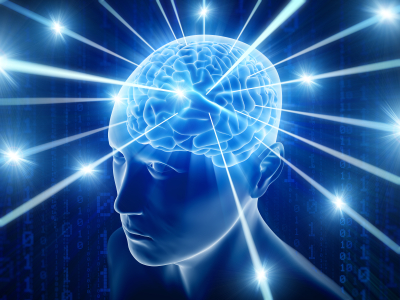Brain Activity Map Project is futile, say some scientists, others enthused
February 28, 2013

(Credit: stock image)
In setting the nation on a course to map the active human brain, President Obama may have picked a challenge even more daunting than ending the war in Afghanistan or finding common ground with his Republican opponents, The New York Times reports.
Many neuroscientists are skeptical that a multiyear, multibillion dollar effort to unlock the brain’s mysteries will succeed.“I believe the scientific paradigm underlying this mapping project is, at best, out of date and at worst, simply wrong,” said Donald G. Stein, a neurologist at the Emory University School of Medicine in Atlanta.
“The search for a road map of stable, neural pathways that can represent brain functions is futile.”
The state of the art in animal research is to sample from roughly a thousand neurons simultaneously. The human brain has between 85 and 100 billion neurons. “For a human we must develop new techniques, and some of them from scratch,” said Dr. Rafael Yuste, a neuroscientist at Columbia who has pioneered the use of lasers to measure the activity of neurons in the cortex of mice.
An article last year in the journal Neuron described a possible path toward mapping the active human brain. The article, signed by six prominent scientists, proposes that the project begin with species that have brains with very small numbers of neurons and then work toward increasingly complex animals.
The scientists cited the worm C. elegans, which to date is the only animal for which there is a complete static map, or “connectome.” That worm has just 302 neurons with 7,000 connections. The authors propose moving on to the Drosophila fly, which has 135,000 neurons; the zebra-fish, with roughly one million neurons; the mouse; and then the Etruscan shrew, the smallest known mammal, whose cortex is composed of roughly a million neurons.
But the leap to the human brain is so enormous that one of the scientists who has participated in planning sessions, the neuroscientist Terry Sejnowski from the Salk Institute, has called the challenge “the million neuron march.”
While the researchers have proposed a wide range of technologies that might be applied to the problems, many of them are still prototypes or speculative. Some of them, like nano-robots being designed at places like the Wyss Institute laboratory at Harvard, seem like they are straight from “Fantastic Voyage,” the 1966 movie that imagined the ability to shrink submarines and humans — specifically, Raquel Welch — for journeys through the human body.
At a meeting in Pasadena, Calif., on Jan. 17 to explore the data storage needs of the proposed mapping project, computer scientists, neuroscientists and nanoscientists concluded that it would require three petabytes of storage capacity to capture the amount of information generated by just one million neurons in a year.
There are one million gigabytes in a petabyte. The Large Hadron Collider in Geneva generates about 10 petabytes of data annually. If the brain contains between 85 and 100 billion neurons, that means that the complete brain generates about 300,000 petabytes of data each year.
One facet of the project certain to create controversy is that the scientists are also developing technologies that manipulate neurons, raising the specter not just of mind reading, but mind control. The scientists argue that it is in controlling neurons that they can gain valuable information on brain function.